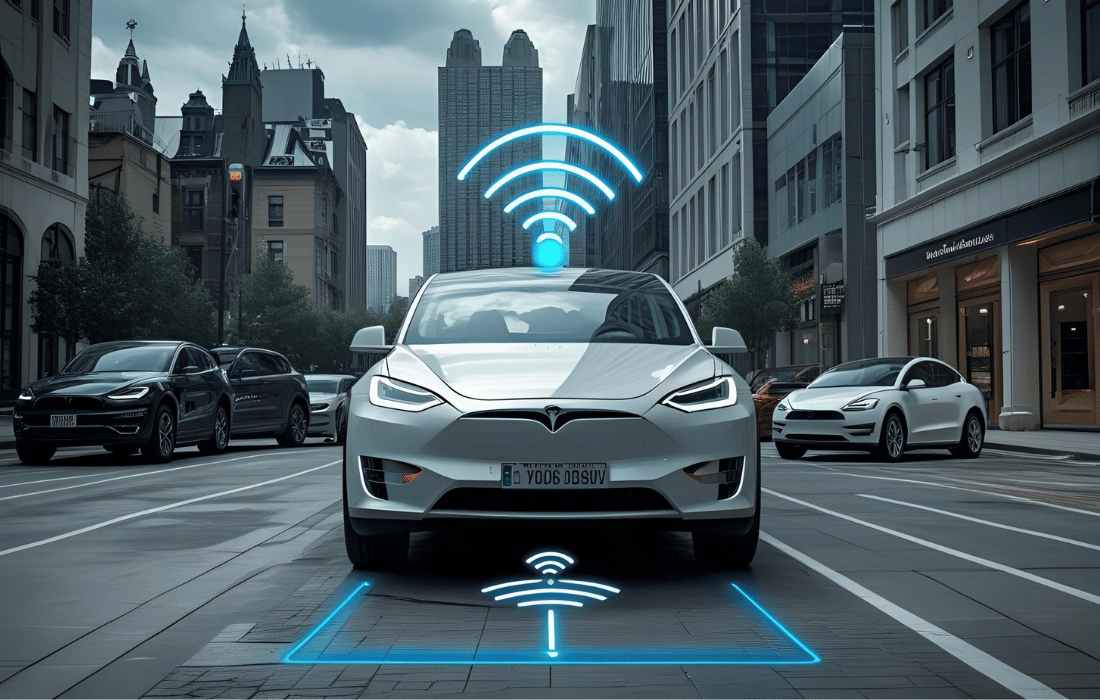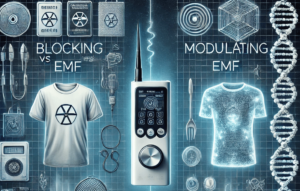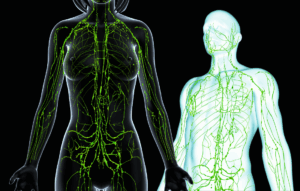The modern vehicle is no longer just a machine with wheels. It’s become a rolling computer. From the software controlling your brakes to the WiFi streaming your kid’s cartoons in the backseat, cars have evolved into wireless tech hubs on wheels. But this evolution has quietly ushered in a new environmental stressor we rarely talk about: electromagnetic field (EMF) radiation.
While EMFs are not new—we’re exposed to them through cell phones, laptops, power lines, and even our fridges—the degree and proximity of exposure in modern vehicles, especially electric and self-driving ones, is unprecedented. And that raises questions we can’t afford to ignore.
What is EMF Radiation? A Quick Science Primer
EMF stands for electromagnetic fields. These are invisible areas of energy, often referred to as radiation, associated with the use of electrical power and various forms of natural and man-made lighting.
There are two main types:
Low-frequency EMFs (non-ionizing radiation): Found in devices like power lines, WiFi routers, and Bluetooth-enabled gadgets. Historically considered “safe,” though new evidence challenges that claim.
High-frequency EMFs (ionizing radiation): Known to cause cellular and DNA damage. Examples include X-rays and UV rays.
Modern vehicles, particularly electric and smart cars, are dense with non-ionizing radiation sources, which we now know can produce biological effects.
How EMF Radiation Affects the Body
The effects of EMF exposure are cumulative and can interfere with several critical biological systems. Here are the main ways EMF radiation can impact your health:
Disrupts cellular communication by altering voltage-gated calcium channels
Increases oxidative stress, leading to chronic inflammation and cell damage
Weakens the blood-brain barrier, allowing toxins to enter sensitive brain tissue
Reduces melatonin production, which disrupts circadian rhythms and sleep
Impairs sperm quality and fertility, especially when exposure is close to the reproductive organs
Alters brainwave activity, potentially contributing to anxiety, depression, and cognitive dysfunction
Increases risk of DNA damage and tumor growth, even at levels below current regulatory standards
Triggers symptoms of electrohypersensitivity (EHS) such as headaches, fatigue, dizziness, and brain fog
A 2020 review found that 93 out of 100 peer-reviewed studies reported oxidative stress in response to low-intensity RF radiation.
As we continue to spend more time surrounded by and immersed in electronic devices, including inside our vehicles, understanding and mitigating these impacts becomes critical.
Smart Cars, Dumber Health Standards
A “smart” car isn’t just one that drives itself. It’s any vehicle loaded with sensors, Bluetooth, GPS, lane assistance, onboard WiFi, and especially 5G connectivity. And with each added feature comes another layer of EMF emissions.
These vehicles are designed for performance, not biological safety. So while you’re enjoying hands-free calls or watching your car parallel park itself, your body might be paying the price.
Key features of smart cars contributing to increased EMF exposure include:
Radar and LiDAR systems for adaptive cruise control and obstacle detection
Integrated 5G antennas for real-time communication and data transfer
Built-in Bluetooth and WiFi for connectivity and entertainment
Proximity sensors and ultrasonic detectors for self-parking and safety features
High-powered processors and electronic control units (ECUs) that manage the vehicle’s operations
Each of these components introduces additional sources of non-ionizing radiation, creating a dense electromagnetic environment within the cabin.
What’s missing? Regulatory scrutiny. Most of these features are evaluated for functionality and safety in terms of performance, not how they interact with or impact human biology.
Tesla, EVs, and the Surge in EMF Exposure
As electric vehicles become more popular for their eco-friendly appeal and cutting-edge features, there’s a hidden cost riding shotgun: EMF radiation. These high-tech cars aren’t just a leap forward in automotive innovation—they’re also a leap in everyday exposure to invisible fields that may pose health concerns.
Large Batteries = Large Radiation Footprint
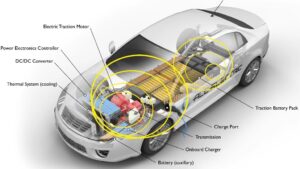
Electric Vehicles (EVs) like Teslas are powered by massive lithium-ion battery packs. These can weigh over 1,200 pounds and are often located directly under the car’s cabin—essentially beneath your vital organs.
Unlike a gas-powered car, where the battery is small and tucked under the hood, EVs rely on high-voltage AC systems that emit extremely low frequency (ELF) radiation. According to testing, the Tesla Model 3 can emit over 50 milligauss (mG) of EMF radiation—the same level as a high-voltage power line.
Charging Periods and Dirty Electricity
The EMF exposure doesn’t stop when the car is off. EVs generate “dirty electricity” during charging—a type of electrical pollution that results from converting AC to DC power. This generates voltage spikes that travel along home wiring and radiate into the surrounding environment.
Research shows dirty electricity can worsen symptoms like fatigue, headaches, anxiety, skin rashes, and even asthma.
Self-Driving Cars: Radiation with a Mind of Its Own
Self-driving cars represent a major leap forward in automotive innovation, but they also introduce an unprecedented level of electromagnetic complexity. With so many overlapping systems communicating in real time, these vehicles may be among the most EMF-saturated environments most people encounter daily.
GPS, Radar, LiDAR & More
Autonomous vehicles rely on an interconnected web of tech that includes:
GPS (radiofrequency EMFs)
Radar (microwave radiation)
LiDAR (infrared lasers)
Ultrasonic sensors and onboard WiFi/Bluetooth
Each of these components adds to the cumulative EMF burden inside the car. And when you’re sealed inside a metal box (a.k.a. a Faraday cage), radiation has nowhere to go but back into you.
Real-Time Communication via 5G
Smart cars using 5G networks communicate with other cars, streetlights, and satellites in real time. This allows for high-speed data exchange but also introduces constant, high-intensity EMF pulses that affect the human nervous system, especially in children and those with electrohypersensitivity (EHS).
Conventional Cars Aren’t Off the Radiation Hook
Even without a massive battery, gas-powered vehicles still produce significant EMFs due to:
Alternators
Onboard computers
Power steering and braking
Radar-assisted cruise control
Bluetooth, GPS, and infotainment systems
- User devices, such as cell phones, smartwatches, wireless headphones, etc.
Consumer Reports found that some gas cars, like the Chevy Cobalt, emitted more EMF than certain hybrids.
Expert Warnings
Dr. Lennart Hardell concluded EMFs are Group 1 carcinogens based on tumor risk.
Dr. Ron Melnick (designer of the NIH National Toxicology Program study) said FCC safety limits are wildly outdated and don’t protect against known risks.
Dr. Christopher Portier, former CDC Director, asserted a high probability that RF radiation causes gliomas and neuromas.
Why the Radiation Regulations Fall Flat
Most global EMF safety limits (FCC, ICNIRP) are based on thermal effects — whether EMF can heat your body. They do not account for:
Oxidative stress
DNA damage
Long-term, low-dose exposure
No Testing in Real-World Scenarios
Phones and devices, including those in cars, are tested at a distance (5mm to 25mm from the body). They are not tested in realistic use positions (like your lap or under your seat).
Over 250 scientists from 40 countries have signed a global appeal urging stronger regulations and reclassification of EMF as a confirmed human carcinogen.
How to Reduce EMF Exposure in Vehicles
We might not be able to eliminate every source of EMF in our environment, but we can certainly take steps to reduce our exposure, especially when it comes to our cars. Being informed and proactive is the best way to protect your health on the road.
Avoid sitting in the car while it’s charging
Use airplane mode on smartphones and tablets when possible
Turn off your phone’s (and car’s, if applicable) WiFi and Bluetooth when not in use to prevent it from constantly searching for signals and emitting unnecessary radiation.
Choose older vehicle models with fewer electronics
Avoid using heated seats, remote auto-start, and other EMF-heavy features unless necessary
EMF Protection Devices for Vehicles
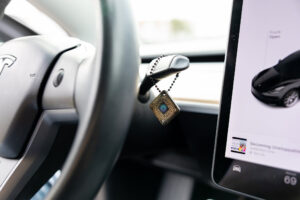
Aires offers portable EMF neutralizing and modulating devices that:
Restructure EMF frequencies through coherent wave interference
Help restore biological coherence without blocking connectivity
Are compatible with the unique EMF environment inside vehicles
Unlike Faraday cages or EMF-blocking fabrics, these technologies allow the vehicle to function normally while modulating the biological impact.
Why I Trust Aires for Radiation Protection
Aires products utilize patented silicon-based microprocessors that have undergone rigorous testing in peer-reviewed studies and international safety assessments. I trust their tech because it doesn’t try to block EMF, which rarely works well in a car anyway, but instead helps the body maintain harmony in the presence of EMF.
These are not theoretical protections. I’ve used them personally in my vehicle for years, noticing improvements in how I feel during long drives. They’re small, easy to place discreetly in the cabin or attached to the keychain, and offer a layer of reassurance in an otherwise wired-up world.
Final Thoughts: Are We Driving Into a Health Crisis?
Electric and smart cars are here to stay, and they’re only getting more advanced. While they may reduce emissions and improve safety, they could also represent a new frontier of health risks we’re just beginning to understand.
Until independent science catches up and regulations reflect the complexity of biological systems, we must each take personal responsibility for protecting ourselves. That doesn’t mean rejecting innovation. It means demanding innovation that aligns with health, not just convenience.
And that begins with awareness.

